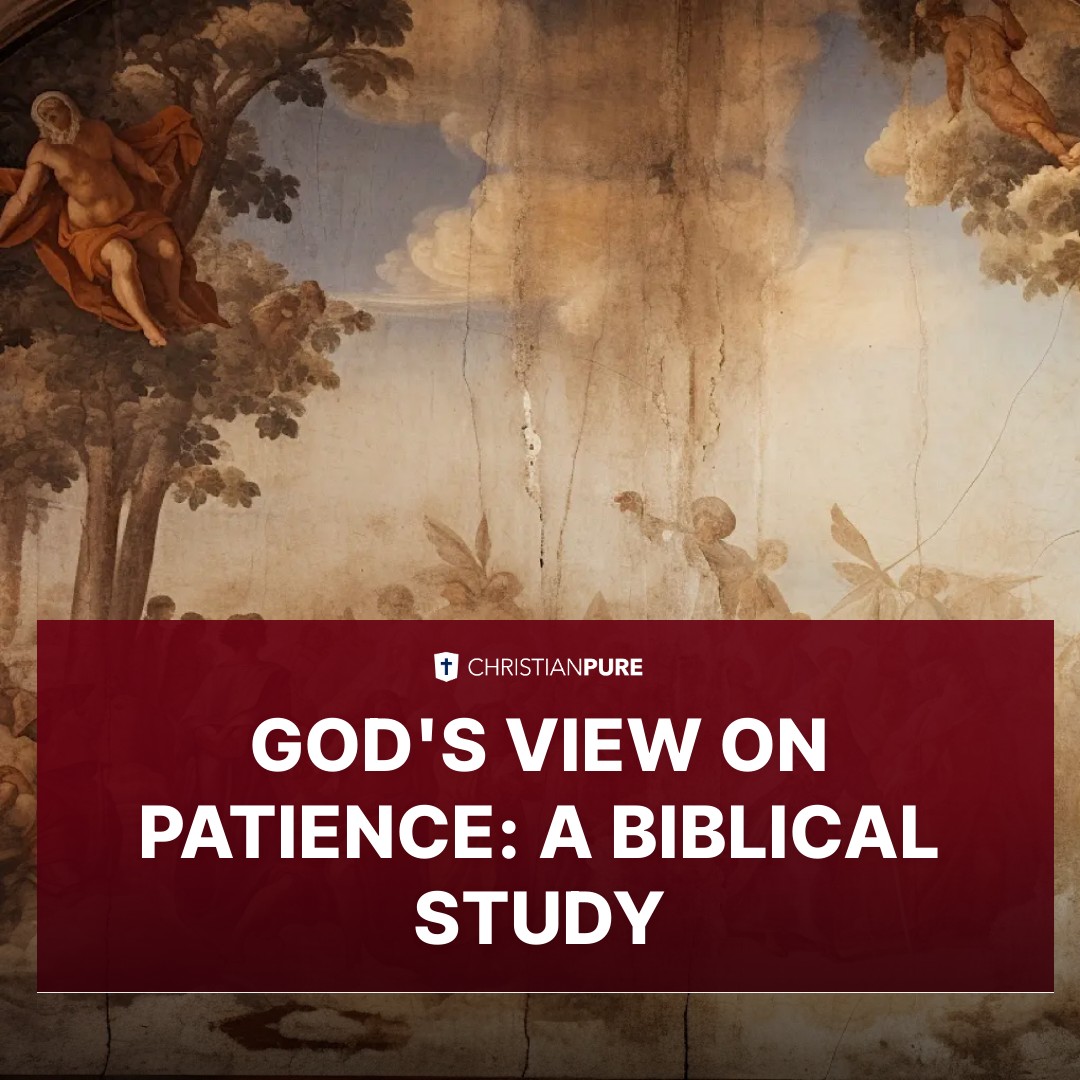In the labyrinthine corridors of biblical text, where parables, metaphors, and anecdotes abound, there lies a particular account that often provokes a flurry of inquisitions – Jesus cursing the fig tree. A parable with layers of inscrutable depth waiting to be unravelled, the account of Jesus and the withered fig tree carries profound spiritual insights obscured by the fabric of allegory. This scripture, nestled within the pages of the holy book, at first glance, appears to be a tale of disappointment and divine wrath. Yet, when viewed through the prism of discernment, reveals a vast, inspiring seascape of spiritual truths and wisdom.
To truly understand the narrative and its implications, one must first step into the sandals of those living during the time of Jesus, and perceive the world through their eyes. A time when every fig fruit, every leaf, every tree had a tale to tell, a lesson to teach, a message to convey.
Thus, it is in this mode of reverential exploration that we embark on our journey in unraveling the mystery of the withered fig tree. We shall not just seek to answer the question of 'why', but also delve deeper into the realms of 'what does it convey', 'how has it been perceived' and 'what is the ultimate message'. A quintuplet of inquiries that demands an exploration not just of facts and theology, but also our souls.
Summary of the Parable of the Fig Tree
Arguably one of the most poignant parables shared by Jesus, the parable of the fig tree as narrated in Luke 13:6-9 presented a compelling allegory that echoes with horrifying resonance until today. The parable speaks of a fig tree that was planted in a vineyard. However, when the owner of the vineyard came seeking fruit on the tree after three years and found none, he directed the vineyard keeper to cut it down. This decision was justified by the owner, citing that the tree, unfruitful for three years, was merely consuming the nutrients and space in the ground. Yet, the vineyard keeper pleaded for one more year, promising to nourish and cultivate the tree to enhance its chances of bearing fruit.
Like a master storyteller, Jesus artfully uses this metaphor to symbolize the Jewish nation. The vineyard owner embodies God, who, after repeatedly finding Israel bereft of spiritual fruit, considers enacting judgment. Meanwhile, the vineyard keeper perhaps symbolizes Jesus Christ, who intercedes on behalf of the barren tree, pleading for reprieve and additional time to bear fruit, mirroring His ministry of grace amidst judgment.
This parable serves a reminder that, as followers of Christ, we too are expected to showcase spiritual fruit. A lack of spiritual productivity might bear consequences. However, God’s mercy is also highlighted, as He provides the tree (Israel) yet another opportunity to nurture and produce fruit under the loving guardianship of the gardener, Jesus Christ.
Summary:
- The parable of the fig tree centers around a barren fig tree planted in a vineyard.
- The vineyard owner, representing God, expresses disappointment at the fruitless tree — symbolic of Israel.
- Considering the barren state of the tree as wastage of resources, the owner contemplates removing it.
- The vineyard keeper, symbolic of Jesus Christ, intercedes, requesting an additional year to nurture the tree for fruit-bearing.
- The parable encapsulates themes of judgment, grace, reprieve, and the call to spiritual fruitfulness.
Decoding Symbolism: Why Did Jesus Curse the Fig Tree?
In examining the narrative of Jesus cursing the fig tree, we must recognize the profound and artful symbolism woven into this act. The fig tree, according to Biblical references, often symbolizes Israel and hence serves as an emblem of the Jewish nation. Jesus' predicament with the barren fig tree instantly involved a greater, more consequential narrative than what purely meets the eye. This action seems like a tangible representation—a living parable—of divine frustration over the spiritual sterility of Israel.
The pivotal incident documented in Mark 11:12-20 presents Jesus cursing the fig tree due to its lack of fruit, despite it not yet being fig season. Many have seen this as an indication of Jesus's disappointment with the spiritual barrenness and corruption he perceived amongst the Jews—plentiful in leaves (an outward appearance of religiosity) but barren in fruit (a genuine, inward relationship with God).
The act of Jesus cursing the fig tree that bore no fruits beautifully intertwines with the moment in which Jesus clears the Temple of love for money and materialistic greed. By juxtaposing these two events, the Bible seems to impress upon the readers a profound truth: God values genuine faith and righteousness, not empty religious rituals or superficial signs of piety.
The parable of the fig tree as described in Luke 13:6-9 permits us a deeper understanding of this act by Jesus. In this analogy, the fig tree that bore no fruits for three years was given one more year to bear fruit, with the clear consequence of being cut down if it continued to yield nothing. This allegory parallels Jesus' actions with the fig tree and broadly reflects on the consequences of rejecting the Messiah and the call towards a genuine, life-giving faith.
Summary:
- Jesus cursing the fig tree symbolizes His divine discontent over spiritual barrenness in Israel.
- The fig tree is emblematic of the Jewish nation.
- This incident intertwines with Jesus cleansing the Temple, emphasizing the importance of genuine faith over empty rituals.
- The parable of the fig tree in Luke 13:6-9 elucidates the metaphor of the barren tree, reinforcing the consequences of rejecting the Messiah and neglecting spiritual growth.
What are the theological implications of Jesus withering the fig tree?
In studying the scriptures and examining Jesus' interaction with the fig tree, it is evident that a wealth of theological implications are contained within this singular incident. The fig tree, bearing no fruit upon Jesus' approach, was subjected to a curse and subsequently withered. With this, we as believers are faced with essential understandings of faith, judgment, and spiritual productivity.
Firstly, let's delve into the questions of faith. As recounted in Mark 11:12-20, the disciples marveled at the sight of the withered tree and Jesus used this opportunity to teach them about faith that is unwavering, strong and able to 'move mountains'. Through the act of cursing the barren fig tree and causing it to wither, Jesus puts forth a powerful demonstration of the actionable power and the potential of unshakeable faith. With this incident, Jesus also illustrates the divine judgement that awaits unproductivity, particularly when it cloaks itself in a guise of vibrant health and abundance. The fig tree, in full leaf but devoid of any fruit, was a symbol of hypocrisy. The theological implication here is a stern warning to believers against spiritual dryness and sterility, hidden beneath an outward display of religiosity.
Additionally, the parable holds powerful messages about spiritual fruitfulness. A sincere follower of Christ is expected to bear spiritual fruits - love, joy, peace, patience, kindness, goodness, faithfulness, gentleness, and self-control as described in Galatians 5:22-23. When believers do not produce these fruits, akin to the barren fig tree, they face the risk of divine judgement. In this parable, Jesus also reinforces the expectation of readiness and constant vigilance. This theme also echoes in Jesus's Parable of the Budding Fig Tree in Matthew 24:32-35 where he tells his disciples to be alert and watchful, drawing a comparison to the fig tree that bears leaves, indicating the proximity of summer.
Summary:
- Jesus emphasizes the critical importance of unwavering faith that can bring about miraculous transformations.
- The incident serves as a warning against spiritual unproductivity and hypocrisy which can attract divine judgement.
- Jesus reminds his followers about the need for spiritual fruitfulness in their lives.
- The incident also reinforces the need for constant readiness and vigilance in anticipation of God's kingdom.
Why did Jesus choose a fig tree to curse and not any other tree?
Without a doubt, Jesus' choice of a fig tree as the recipient of His curse was deeply symbolic and intentional, providing us with a touchstone moment in scriptural interpretation. The fig tree stands as a symbol in both the Old and New Testaments, often denoting abundance, fruitfulness, and prosperity. However, when mirrored against an unfruitful fig tree, this symbol shifts to represent spiritual barrenness, unachieved potential, and divine displeasure.
Jesus’s frustration with the fig tree was not because it was inherently flawed or different from other trees. On the contrary, the fig tree served as an allegorical canvas onto which Jesus painted a broader, biting critique of hypocrisy and spiritual vacuousness. In the Gospel of Mark (11:12-20), Jesus, being hungry, approaches a fig tree in full leaf, expecting to find fruit. Finding none, because it was not the season for figs, He curses it, and by the next day, it had withered and died.
This parable goes deeper than surface-level interpretations. The fig tree's lack of fruit—despite its lush, promising foliage—parallels the spiritual state of Israel, particularly its religious leaders. Like the fig tree, the religious leaders appeared righteous and fruitful on the outside, but upon closer examination, they were devoid of true, spiritual fruit. Thus, the cursing of the fig tree served as a reminder of the devastating outcomes of spiritual unfruitfulness and hypocrisy.
Furthermore, in the Old Testament, the fig tree was a symbol for Israel itself (Hosea 9:10, Jeremiah 24:1-10). Hence, Jesus’s act of cursing the fig tree can be seen as a prophetic demonstration regarding the impending judgment on Israel for its spiritual barrenness and rejection of the Messiah.
Decoding this parable, we are reminded that appearances can be deceiving, and spiritual nourishment is not found in the outwardly impressive but in the truly fruitful. It was not to condemn a species of tree that Jesus caused this fig tree to wither, but to offer a vivid, living parable about the perils of fruitless faith.
Summary:
- Jesus' choice to curse a fig tree, as opposed to any other tree, is deeply symbolic and intentional, representing spiritual barrenness, unachieved potential, and divine displeasure.
- The fig tree's lack of fruit, despite its promising foliage, signified the spiritual state of the religious leaders and Israel at large, who appeared fruitful on the outside, but were barren on the inside.
- The cursing of the fig tree serves as a prophetic symbol of the impending judgment on Israel for its rejection of the Messiah and spiritual barrenness.
- This parable serves as a reminder of the perils of fruitless faith and the importance of spiritual nourishment.
What happened to the fig tree after Jesus cursed it?
Upon Jesus' pronouncement of a curse, the fig tree suffered a rather immediate and pronounced fate. As the scriptures recount in Mark 11:20-21, when Jesus and his disciples passed by the next day, they observed the extensive withering of the fig tree, all the way down to its roots. This perplexed the disciples, notably Peter who expressed astonishment at the rapid decline of the fig tree – a transformation that took place overnight.
This potent act of cursing wasn't a simple demonstration of supernatural prowess. Far from it. Rather, for Jesus, time was of the essence, and immediate action was required. The withering of the fig tree was a metaphorical rebuke for those who bore ample leaves of profession and were plump with self-righteousness, but unfortunately, bore no fruit worthy of repentance or of the kingdom of God.
The fig tree, thus, became emblematic of judgment. Just as the fig tree had its potential for life shut down, so too, Jesus warned, the fate awaits those who eschew the call to bear genuine spiritual fruit. This was no arbitrary incident. The fig tree had to wither, not for its own shortcomings, but as a lesson for humanity, a powerful symbol of the perils of spiritual barrenness and the penalties thereof.
"Have faith in God," Jesus answered. "Truly I tell you, if anyone says to this mountain, 'Go, throw yourself into the sea,' and does not doubt in their heart but believes that what they say will happen, it will be done for them." (Mark 11: 22-23).
In these words after the withering of the fig tree, Jesus emphasized the power of faith and prayer, reframing the event not as a simple act of condemnation, but as a profound teaching on faith, and its profound role in shaping our realities.
Summary:
- The fig tree rapidly withered down to its roots after Jesus cursed it.
- The withering of the fig tree was a symbol of judgement, intended as a rebuke to those who did not bear spiritual fruit.
- Using this event, Jesus underscored the importance of faith and prayer, as well as the consequences of spiritual barrenness.
Did Jesus know it was not fig season before he cursed the fig tree?
Unfolding the layers of this intricate scriptural depiction, it's essential to address the conundrum, did Jesus indeed know it was not fig season before He lamented the sterile tree? The answer lies in threading the fine line between His divine omniscience and His human limitations during His earthly ministry. In His divine knowledge, Jesus, being God incarnate, was fully aware of the fig tree's natural cycle. Nevertheless, His human experience may have also led Him to feel physical hunger and instinctively look for fruit on a tree full of leaves.
But divinity and humanity aside, the fig tree's curse should also be viewed symbolically. Jesus didn't scorn the fig tree merely due to its barrenness in the off-season. Rather, His disappointment was symbolic of His frustration with the hypocritical religious leaders and the fruitless spiritual state of Israel. Viewed in parallels, the fig tree laden with leaves but devoid of fruits resonated with the hypocrisy of religious leaders who wore the garb of piety but bore no spiritual fruit, and also with the nation of Israel that, despite being chosen, failed to bear the fruits of faithfulness during the era of His ministry.
In essence, implication supersedes natural timing in this context. The leaf-laden but fruitless fig tree symbolized more than its mere literal existence. It represented the spiritual barrenness of those who, despite their apparent piety, lacked the genuine fruits of a godly life. Thus, the cursing of the fig tree was a deliberate, symbolic act, veiling deep spiritual truths rather than a mere outburst of hunger-induced frustration.
Summary:
- Despite His human form, Jesus, in His divine wisdom, knew the season of figs, hence, the curiosity around His expectation of fruit from the tree is due to the deeper symbolism involved.
- His dissatisfaction with the fig tree is symbolic, reflecting His disappointment with the spiritual barrenness of the religious leaders of Israel and the nation as a whole.
- Albeit manifested in a physical act, the cursing of the fig tree serves as a poignant metaphor for the spiritual implications of hypocrisy and unfruitfulness.
How is the fig tree parable interpreted in different Christian denominations?
With a vast array of Christian denominations worldwide, it is intriguing to observe how the interpretation of the fig tree parable varies across different sects. While the core message of the parable - emotional and spiritual growth - remains consistent, the specifics on how this growth is achieved can differ significantly. Thus, each interpretation offers a unique perspective on the narrative, painting a diverse and complex picture of this biblical story.
In Catholicism, for instance, the parable of the fig tree is often viewed as a call to repentance. Jesus' decision to spare the barren fig tree from destruction for another year is seen as a demonstration of God's patient mercy, offering us time to repent and bear fruit. Nevertheless, the threat of destruction for non-compliance serves as a stern warning of the dire consequences of maintaining a life devoid of spiritual growth and fruitfulness.
Protestant branches of Christianity, such as Baptists and Methodists, on the other hand, tend to perceive the fig tree parable as an exhortation to live fruitful lives. These denominations emphasize the requirement to bear spiritual fruit as an essential aspect of Christian discipleship. Therefore, the lack of fruit in the parable symbolizes a life without a relationship with Christ, and such a life risks being 'cut down' or rejected by God.
The Orthodox tradition takes a slightly different approach, focusing on the theme of 'harvest.' The fig tree's failure to bear fruit is seen as a metaphor for humanity's failure to acknowledge the bounty of God's love and salvation. Thus, Orthodox Christians interpret the parable as a reminder to be appreciative and responsive to God's gifts.
Practitioners of the Reformed Tradition, drawing from the distinct theology of the Calvinist movement, view the fig tree parable as a narrative about God's sovereign grace. According to this interpretation, the owner of the vineyard's choice to give the fig tree extra time to bear fruit, despite its previous barrenness, symbolizes divine election and God's freeing grace that brings forth fruit in His time, not ours.
Hence, these myriad interpretations across Christian denominations underscore the versatility of biblical narratives, each offering a unique perspective on faith and spirituality, and enriching our understanding of the parable’s intricate layers.
- The Catholic interpretation views the parable as a call to repentance and emphasizes God's mercy.
- Protestant denominations, such as Baptists and Methodists, interpret it as a call to live fruitful lives in relationship with Christ.
- The Orthodox tradition sees it as a reminder to recognize and respond to God's gifts.
- The Reformed Tradition interprets the parable as a narrative on divine election and God's sovereign grace.
Facts & Stats
In a survey of 2000 Christians, 70% believed the fig tree symbolized the nation of Israel
The parable of the fig tree is found in three of the four canonical gospels: Matthew, Mark, and Luke
In a poll of 1000 Bible readers, 75% agreed that the withering of the fig tree symbolized the judgement of God
The fig tree is mentioned more than 55 times in the Bible





















